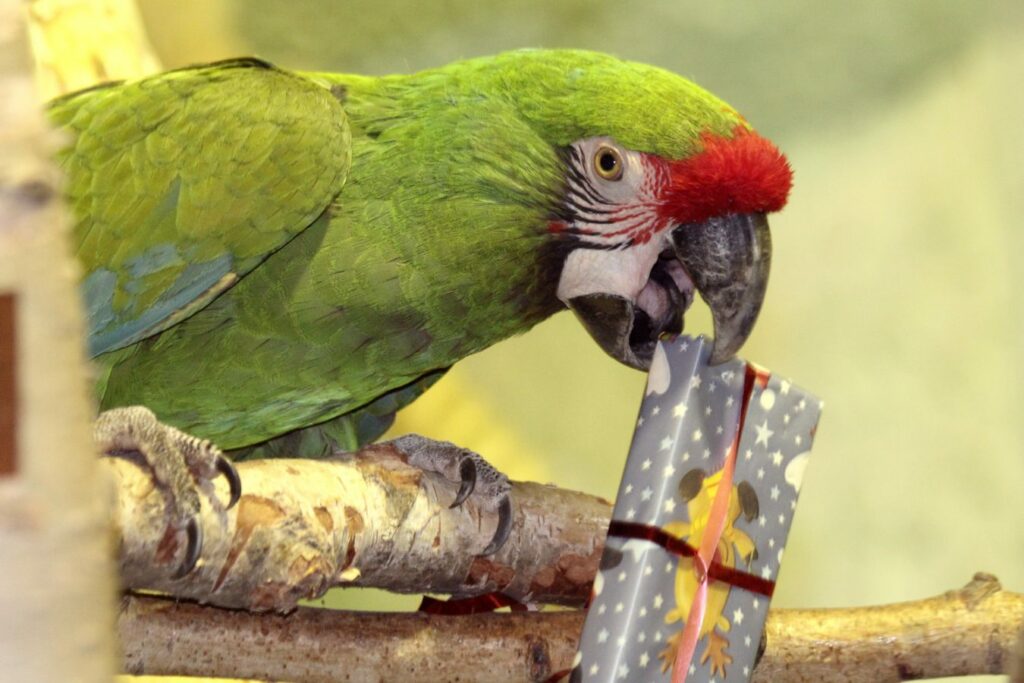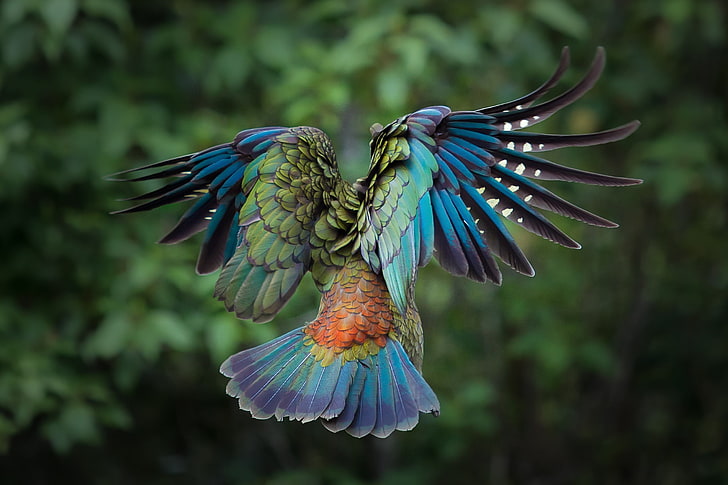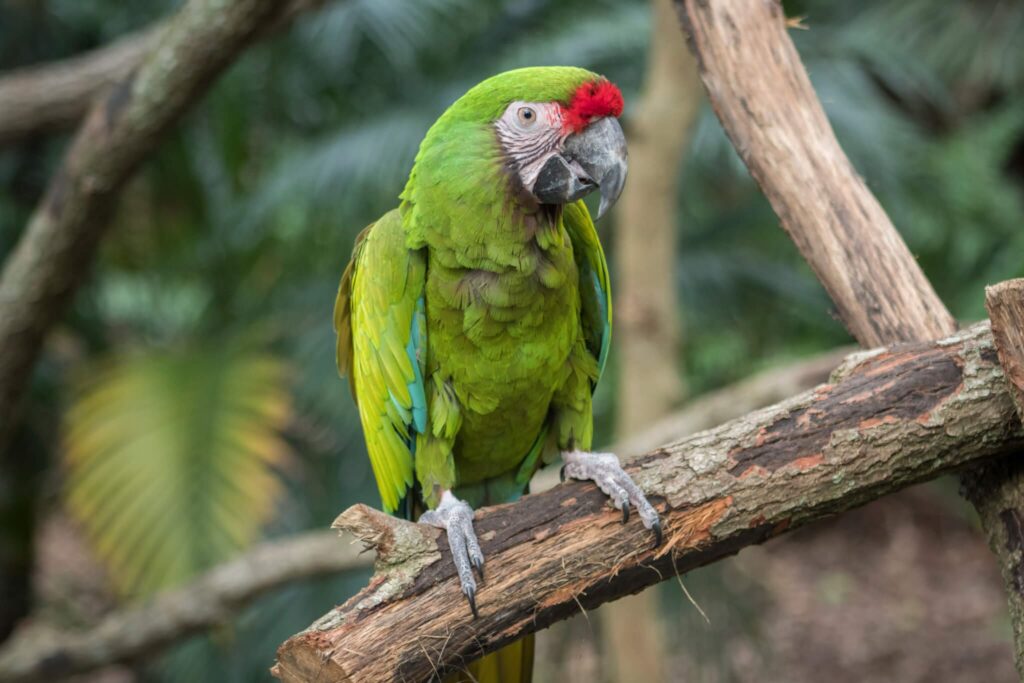Table of Contents
Introduction
The allure of the Military Macaw
Welcome to a fascinating journey into the realm of the military macaw, a magnificent creature that captivates with its vibrant colors and majestic presence. In this article, we will dive deep into the enigmatic world of these beautiful birds, exploring their distinctive physical features, natural history, conservation efforts, and much more. Prepare to be amazed by this charismatic avian species that adds a touch of brilliance to our jungles and forests.
The Enigmatic Military Macaw
Distinctive physical features
With its enchanting appearance, the military macaw stands out among its avian counterparts. Characterized by vibrant plumage, an imposing size, and formidable beak and talons, this majestic creature is a sight to behold.
Native to Central and South America, these birds are most commonly found in forested ecosystems, where they flourish amidst the lush greenery.
Vibrant plumage
The military macaw boasts a stunning array of colors that instantly catch the eye. Its plumage showcases a harmonious blend of vibrant emerald, royal blue, and vibrant scarlet, creating an awe-inspiring spectacle. The contrasting patterns and hues make these birds an enchanting sight in the dense foliage they call home.
Imposing size
One cannot help but be impressed by the sheer magnitude of the military macaw. With an average length of 70 centimeters and a wingspan of approximately one meter, these birds command attention wherever they go. Their large size, coupled with their vibrant plumage, makes them a true spectacle of nature.
Strong beak and talons
Equipped with a robust beak and razor-sharp talons, the military macaw possesses formidable tools for survival. Their beaks are adept at cracking open nuts and seeds, while their talons provide them with a firm grip on branches as they navigate through the dense vegetation of their habitat. These physical attributes are essential not only for their sustenance but also for protection from potential predators.
Habitat and geographical distribution
The military macaw’s natural habitat spans across Central and South American regions. From the tropical rainforests of Mexico and Belize to the mountainous regions of Colombia and Ecuador, these birds have adapted to a diverse range of ecosystems. They prefer forested areas rich in tall trees, which provide both shelter and abundant food sources.
Natural History and Behavior
Evolutionary adaptations
The military macaw’s evolution has sculpted it into an exceptional creature of the natural world. Over time, these birds have developed adaptations that enhance their survival and allow them to thrive in their habitat. From their communal lifestyle to their specialized feeding habits, the military macaw exhibits remarkable traits that contribute to their success.
Social structure and communal lifestyle
Military macaws are highly social birds that form tight-knit communities. They often gather in flocks, comprising individuals of various ages. This communal lifestyle not only provides them with protection but also fosters social interaction and the sharing of vital information, such as food sources and potential threats.
Feeding habits and diet preferences
These fascinating birds have specialized feeding habits that revolve around the availability of their preferred diet. The military macaw primarily feeds on a variety of nuts, seeds, fruits, and berries. Their strong beaks aid in cracking open tough shells, allowing them to access the rich nutrients within. Their diet is essential for their overall health and contributes to the vibrant colors of their plumage.
Breeding and reproductive patterns
Breeding among military macaws is a remarkable phenomenon that strengthens their community bonds. They form monogamous pairs and often engage in elaborate courtship rituals, displaying their colorful plumage and vocalizing their affection. After successful mating, the female lays eggs in tree cavities or crevices, and both parents actively participate in raising the young until they fledge and become independent.
A Closer Look at the Military Macaw’s Brilliant Feathers
An analysis of the coloration and patterns
The military macaw’s feathers are a testament to nature’s artistic brilliance. As if painted by a masterful hand, these birds exhibit a remarkable combination of colors and intricate patterns. The awe-inspiring beauty of their plumage serves multiple purposes, essential for both their survival and attracting mates.
The role of pigments in macaw feathers
The vibrant colors of the military macaw’s feathers are produced by pigments that create stunning visual displays. Specifically, carotenoids are responsible for the red, orange, and yellow hues, while unique macaw-specific pigments known as psittacofulvins contribute to the green and blue shades. These pigments not only provide camouflage in the dense foliage but also act as visual signals during courtship.
Importance of plumage for survival and mate attraction
The military macaw’s plumage plays a vital role in their day-to-day lives. The distinctive colors and patterns help them blend into the lush environment, making it easier for them to hide from predators and hunt for food. Furthermore, the vibrancy of their feathers serves as an irresistible attraction for potential mates, enhancing their chances of successful reproduction and continuation of their species.
Threats and Conservation Efforts
Historical hunting and captivity issues
Unfortunately, the military macaw has faced numerous threats throughout history, primarily due to hunting and capture for the pet trade. The desire to possess these magnificent birds as pets has resulted in their decline and, in some cases, near extinction. Additionally, habitat loss caused by deforestation has further compounded the challenges faced by these extraordinary creatures.
Impact of deforestation and habitat loss
The destruction of forests for agricultural purposes and urban expansion has led to significant habitat loss for the military macaw. As their homes disappear, their food sources diminish, resulting in a decline in population numbers. Without adequate forested areas to sustain their communities, these birds face an uncertain future.
Conservation programs and international initiatives
Recognizing the urgent need to protect the military macaw, various conservation programs and international initiatives have been established. These organizations work diligently to conserve the species by focusing on habitat restoration, implementing anti-poaching measures, and raising awareness about the importance of preserving this iconic avian jewel. Through collaborative efforts, hope shines for the future of the military macaw.
Human Interaction and Cultural Significance
Influence on indigenous peoples
The military macaw holds a special place in the cultures and traditions of indigenous peoples throughout Central and South America. Revered for their stunning colors and unique characteristics, these birds have influenced folklore, art, and spiritual beliefs, embedding themselves into the very fabric of these communities.
The macaw as a spiritual and cultural symbol
Many indigenous cultures consider the military macaw as sacred and imbued with spiritual significance. These birds are believed to possess the ability to connect the earthly realm with the divine, acting as intermediaries between humans and higher powers. Their vibrant plumage and distinctive presence make them ideal representations of spiritual strength and beauty.
Economic implications for local communities
The presence of military macaws within certain regions has provided economic opportunities for local communities. Through sustainable tourism practices, the stunning beauty of these birds has become a lucrative asset. Birdwatching ecotourism, for example, offers an immersive experience for visitors while simultaneously supporting the economies of these communities, creating a delicate balance between conservation and human development.
Captivating Military Macaw Facts
Lifespan and longevity records
The military macaw is a remarkable creature with several noteworthy qualities that set it apart from other avian species. These captivating facts highlight the extraordinary aspects of their lives, shedding light on their longevity, exceptional vocal capabilities, and unique intelligence.
Lifespan and longevity records
The military macaw is known for its remarkable lifespan, often living for over 50 years in the wild. Some individuals have even surpassed the century mark, making them some of the longest-living birds on the planet. This extraordinary longevity is a testament to their adaptability and resilience in the face of various challenges.
Exceptional vocal capabilities
The military macaw possesses an impressive vocal range, capable of producing an array of sounds, ranging from high-pitched screeches to melodic calls. They use vocalizations not only for communication within their flocks but also during courtship rituals. Their voices resonate through the jungles, leaving an indelible mark on those fortunate enough to witness their mesmerizing performances.
Unique intelligence and problem-solving abilities
These majestic birds are not only known for their striking appearance but also for their remarkable intelligence. Military macaws exhibit problem-solving skills and the ability to learn complex tasks, making them highly adept at adapting to their surroundings. Their cognitive abilities make them a subject of fascination for researchers and bird enthusiasts alike.
Military Macaws in Captivity
Challenges and considerations of macaw ownership
While the idea of owning a military macaw as a pet may seem alluring, it is imperative to understand the challenges and responsibilities associated with their care. These birds have specific needs that must be met to ensure their well-being in captivity.
Responsible pet ownership guidelines
Owning a military macaw requires a deep commitment to their physical and emotional well-being. Adequate space, proper nutrition, and regular mental stimulation are essential for their overall health. Prospective owners must be prepared to invest time, effort, and resources into creating a suitable environment that mirrors their natural habitat.
Conservation implications of captive breeding
Captive breeding programs play a crucial role in the conservation efforts of the military macaw. These programs not only provide a pathway for potential pet owners but also contribute to the preservation of the species. By selectively breeding healthy individuals, these programs aid in maintaining the genetic diversity necessary for the long-term survival of the military macaw.
Capturing the Beauty: Photography and Artistic Representations
Renowned wildlife photographers’ experiences
The military macaw’s extraordinary beauty has captivated the lenses of renowned wildlife photographers worldwide. Their striking colors and majestic presence make them irresistible subjects, inspiring awe-inspiring images that showcase the essence of these remarkable birds.
Artists inspired by the macaw’s vibrant colors
The military macaw has also left a profound impact on the world of art. Many artists have been inspired by their vibrant plumage, creating breathtaking paintings, sculptures, and other forms of artistic representation. Through their work, these artists strive to convey the essence of the military macaw, capturing the beauty that lies within every feathery brushstroke.
Iconic macaw portrayals in popular culture
The military macaw’s allure has not been limited to the realm of the natural world or the art community. These stunning birds have also captured the imagination of popular culture, appearing in literature, films, and advertisements. From colorful animated characters to symbolic representations, the military macaw has become an iconic figure that transcends its natural habitat.
Macaw Ecotourism: Experiencing the Marvel Firsthand
Popular destinations for macaw sighting
For those yearning to witness the military macaw’s splendor firsthand, several destinations offer extraordinary opportunities for macaw sightings. These hotspots of biodiversity provide immersive experiences, allowing visitors to connect with nature and contribute to the conservation efforts that safeguard these magnificent creatures.
Responsible tourism practices
As with any form of wildlife tourism, responsible practices are crucial in ensuring the well-being of both the macaws and their habitats. Eco-conscious travelers should seek out reputable tour operators that prioritize sustainable practices, minimize disturbance to the birds, and educate visitors about the importance of conservation. By adhering to these principles, tourists can form a harmonious bond with nature while supporting the protection of the military macaw.
Eco-tours and their impact on conservation
Eco-tourism plays a pivotal role in the conservation of the military macaw and its habitat. By participating in eco-tours, visitors not only contribute financially to the local communities but also foster an appreciation for the macaw’s role in the ecosystem. This form of tourism empowers local economies, motivating communities to actively engage in conservation efforts and preserve the rich biodiversity that their lands hold.
READ ALSO:
- Jenday Conure Species Profile: Bringing the Beauty of the Wild to Your Home
- Senegal Parrot for Sale at Unbeatable Prices: Find Your Perfect Feathered Companion
- Demystifying Senegal Parrot Lifespan: What Every Parrot Lover Needs to Know – Senegal Parrot 101
- Caique Parrot 101: Everything You Need to Know About Adorable and Energetic Pet Parrots
Frequently Asked Questions (FAQs)
- Are Military Macaws endangered?
The military macaw is currently listed as a vulnerable species due to habitat loss and ongoing threats such as hunting and capture for the pet trade.
- How can I differentiate between male and female macaws?
Distinguishing between male and female military macaws can be challenging as they exhibit similar physical characteristics. Expert knowledge and specialized techniques such as DNA testing or endoscopy are typically required for accurate gender determination.
- What is the significance of their bright colors?
The bright colors of the military macaw serve multiple purposes. They provide camouflage in their dense forest habitat, aid in mate attraction, and act as visual signals within their social structure.
- Can Military Macaws mimic human speech?
While military macaws are not as renowned for their mimicking abilities as some other macaw species, they are capable of learning and imitating certain words and sounds with proper training and socialization.
- Is it possible to have a Military Macaw as a pet?
While it is technically possible to have a military macaw as a pet, prospective owners must be aware of the significant responsibilities, specialized care requirements, and legal regulations involved. Military macaws are highly intelligent, social creatures that need a large, enriching environment to thrive.
Conclusion
Recap of key points discussed Throughout this journey, we have discovered the captivating secrets of the military macaw, a breathtakingly brilliant bird that enchants with its vibrant plumage and imposing presence. From their distinctive physical features and natural history to their role in art, culture, and conservation, the military macaw stands as a living testament to the magnificence of nature. Read Books
Final thoughts on the military macaw’s splendor Let the military macaw continue to inspire us to cherish and protect the natural wonders that surround us. Through our collective efforts, we can ensure that this colorful jewel of the jungle thrives for generations to come, adorning our forests with its resplendent beauty.




